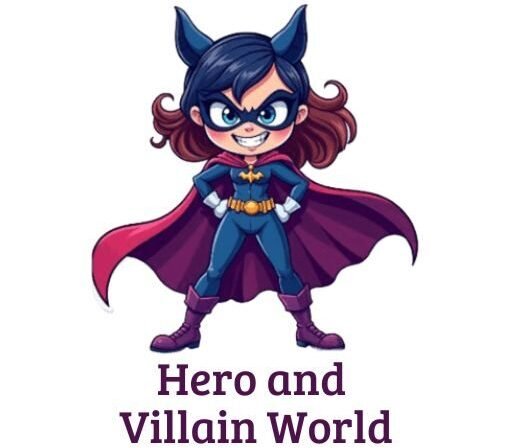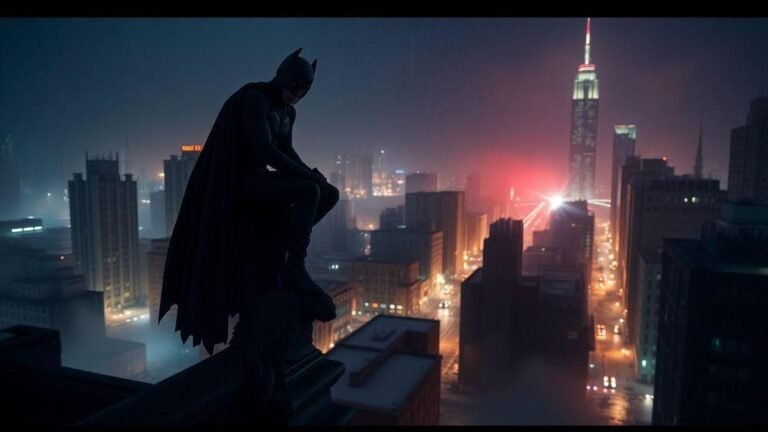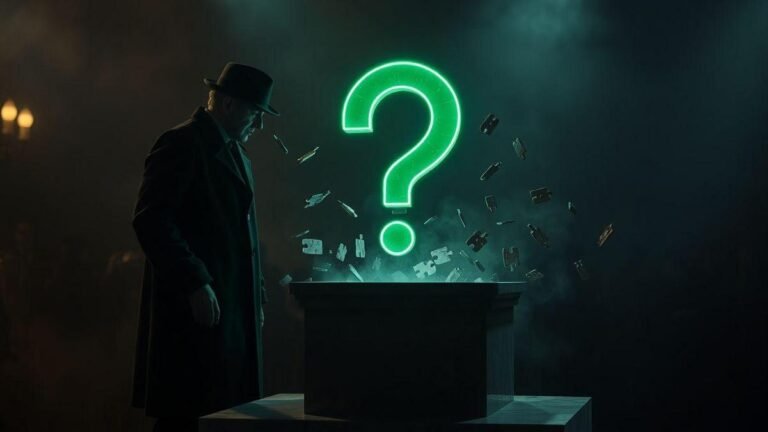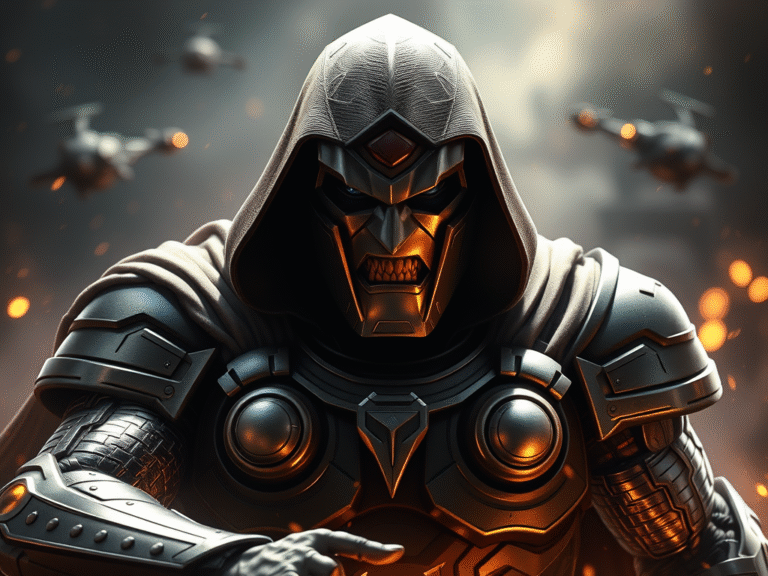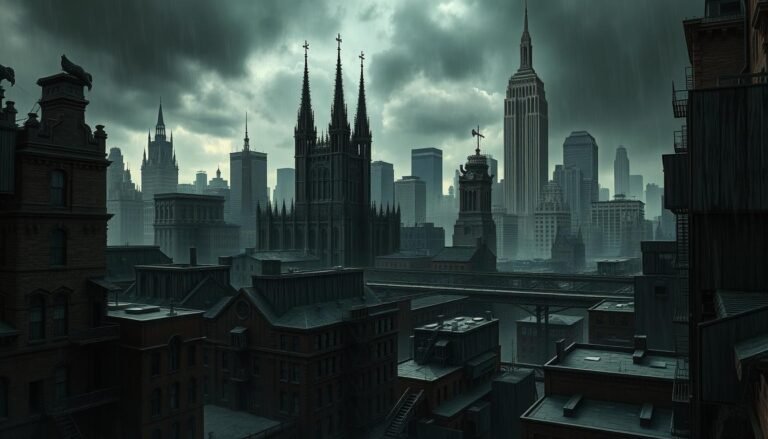Marvel’s Earth X Trilogy: Alex Ross’s Sweeping Dystopian Future for Classic Heroes
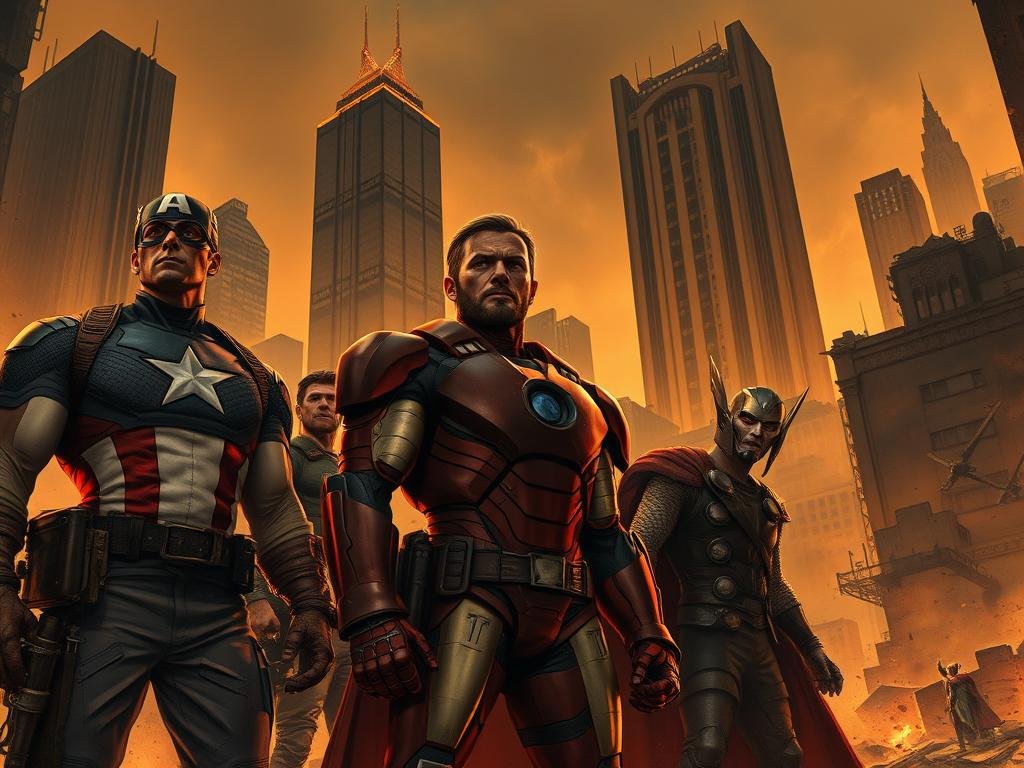
Marvel’s Earth X Trilogy: I still remember the first time I held that dog-eared comic book in my hands. The cover felt heavy with possibility – Captain America’s shield cracked, Thor’s hammer buried in rubble, Iron Man’s armor rusted beyond recognition.
This wasn’t the Marvel Universe I grew up with. It was something raw, daring, and uncomfortably human.
What began as Alex Ross’s sketches for a magazine feature became a seismic shift in superhero storytelling.
Through three interconnected series, the creative team reimagined icons like Spider-Man and the X-Men in a broken world where power became a curse rather than a gift. Everyone had abilities. No one had answers.
The genius lies in how these stories mirror our own fears. What happens when exceptionalism fades? How do heroes matter in a society that’s equally empowered? Ross’s haunting artwork – all muted tones and crumbling skylines – makes these questions feel urgent, even decades later.
I’ll guide you through this shadow version of Marvel lore, where familiar faces become tragic mirrors of their former selves.
We’ll explore how a 1990s creative experiment became a blueprint for mature superhero narratives, challenging readers to see their favorite characters through ash-stained lenses.
An Introduction to a Dystopian Marvel Landscape
Opening that comic book felt like stepping through a shattered mirror. Instead of gleaming spandex and quips, I found heroes swallowed by despair.
Spider-Man’s suit hung loose on his frame. Thor’s hammer lay buried under subway tracks. This wasn’t the Marvel Universe I knew – it was a funeral for hope.
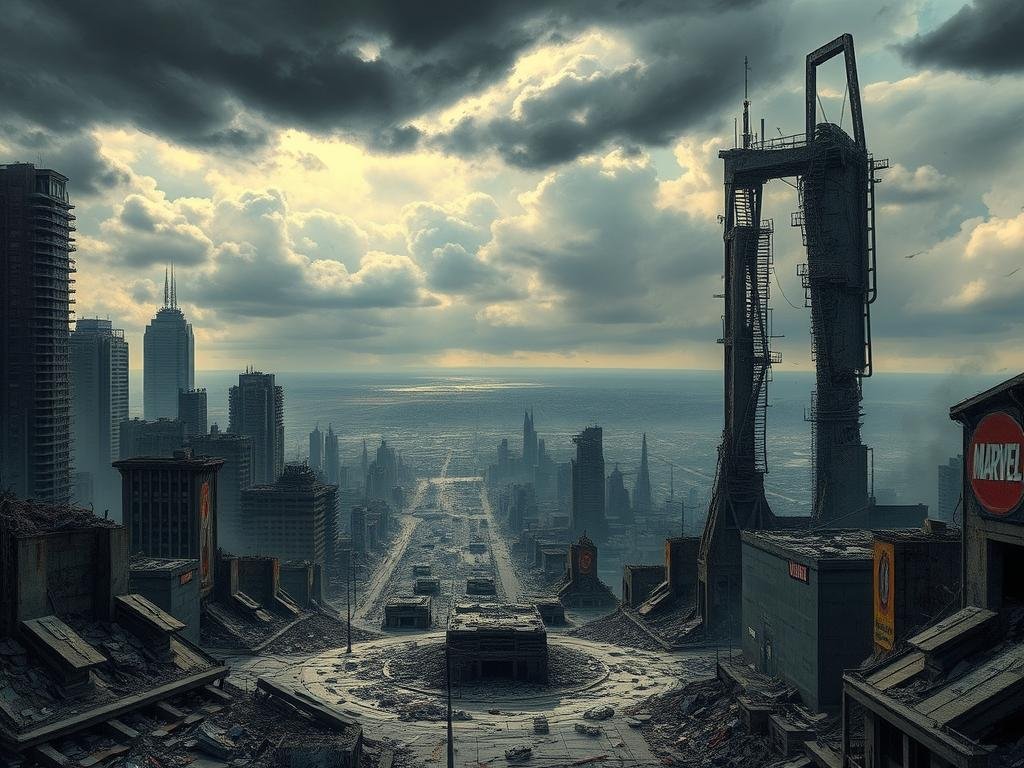
My First Encounter with Earth X
I’ll never forget how the story reframed heroism. When Terrigen Mists gave powers to everyone, icons became relics.
Captain America’s iconic shield? Replaced by an A-shaped scar across his face. Iron Man lived in a sterile pod, terrified of mutating like the masses.
The world felt claustrophobic. Alien squids controlled zombified crowds where Hydra once lurked. New York’s skyline had more craters than buildings. Yet Machine Man’s dry commentary kept me turning pages – his AI perspective oddly comforting.
Setting the Context for a Marvel Future
What makes this narrative brilliant isn’t the chaos, but the quiet moments. Uatu the Watcher shows us a Reed Richards consumed by guilt. Black Panther rules a dead kingdom. These characters aren’t just damaged – they’re humanized.
Most comic books from that era tried being “mature” through violence. This one asked harder questions. What’s special about superpowers when everyone has them? Can you still be heroic when the details of your identity get erased? That’s why it still matters.
Exploring marvels earth x trilogy dystopian future
The true horror in this world wasn’t ruined cities or alien invasions. It was watching heroes grapple with irrelevance.
Ten years after the heroic age ended, Black Bolt’s attempt to protect his people backfired spectacularly. His Terrigen Mists transformed humanity – but erased the concept of specialness.
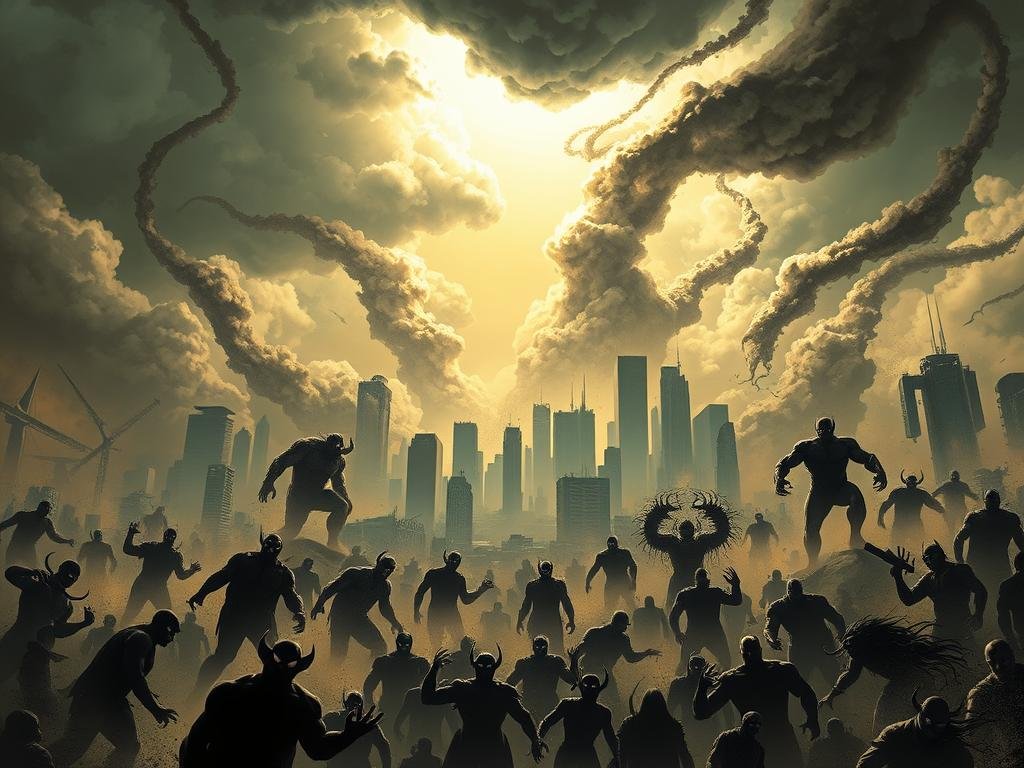
Defining the Dystopia in the Marvel Universe
Imagine a universe where Spider-Man’s radioactive bite means nothing. Where mutants blend into a sea of evolved humans.
This comic landscape shows societal collapse through two lenses: Richards’ failed experiment gets blamed for “Plague X,” while Celestial meddling triggers unpredictable mutations.
Traditional roles evaporated. Former icons became relics. I found myself asking: What’s a character’s purpose when their origins no longer matter? The answer lies in quiet moments – a retired Iron Man whispering, “We were never the solution.”
Key Themes and Vision Behind the Series
The story asks brutal questions. Can powers coexist with meaning? Is heroism possible when everyone’s enhanced? Black Bolt’s mists didn’t just alter the population – they exposed our obsession with exceptionalism.
Three ideas stuck with me:
- Identity crumbles faster than buildings
- Sacrifice looks different when you’re not unique
- Hope survives in small, human choices
This vision reshaped how I view superhero stories. True courage isn’t in the flashy battles – it’s in choosing decency when your entire life gets rewritten.
The Origins and Historical Backdrop of Marvel’s Universe
What if I told you every hero’s origin was part of a million-year-old cosmic scheme? Earth X rewrites Marvel’s history with a revelation that left me reeling – our favorite characters were never accidents. They were chess pieces in a game older than civilization.
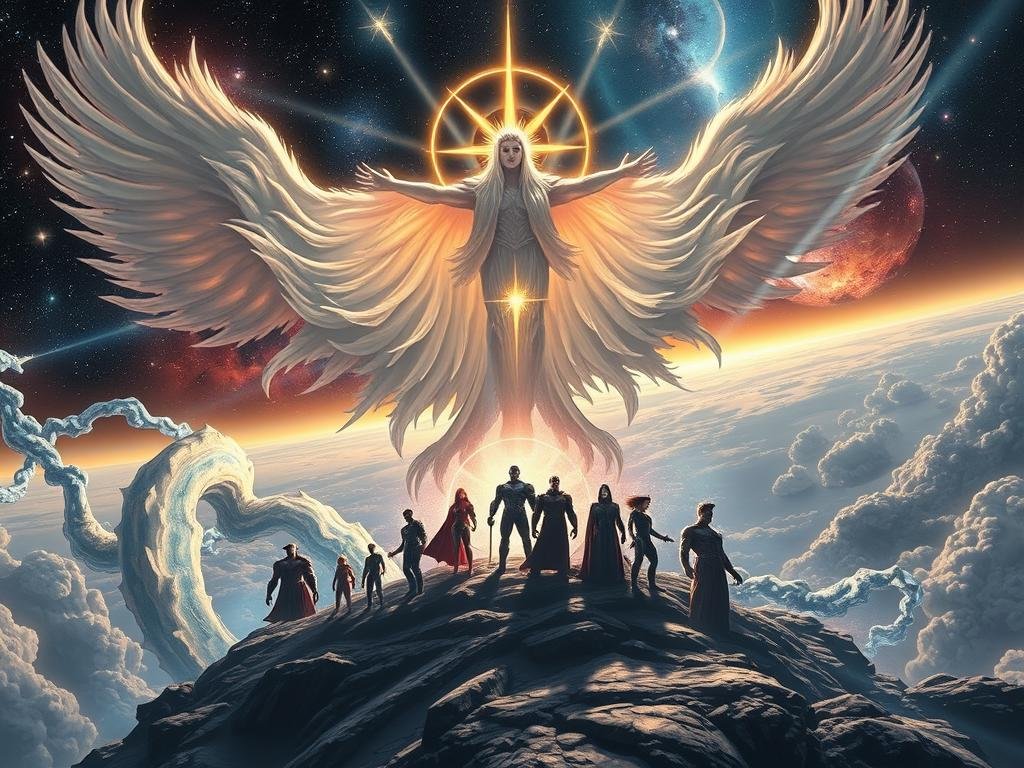
From Celestials to Inhumans
Here’s the jaw-dropping fact: Ancient Celestials tinkered with human DNA. They needed protectors for their cosmic embryos buried in planets. Humans became living antibodies – our mutation potential designed to fight threats like Deviants.
This explains everything. Mutants? Inhumans? Norse gods? All results of Celestial engineering. Thor’s hammer suddenly feels less magical and more… programmed. Even Asgardians unknowingly limited their own power by believing they were deities.
Revamping Marvel History through Dystopia
Now connect the dots. The Fantastic Four’s space mission? A trigger exposing Earth’s Celestial embryo. The Terrigen Mists weren’t just for Inhumans – they jumpstarted humanity’s final evolution into universal guardians.
What stunned me most was how this history reframes heroism. When everyone gains powers through the mists, it’s not chaos – it’s destiny. Our Marvel Universe becomes a nursery for cosmic antibodies, with heroes finally fulfilling their million-year purpose.
Yet here’s the twist: Even predetermined origins can’t erase free will. That’s why Cap still fights when hope seems lost. Why Spider-Man keeps swinging. Their choices matter more than any Celestial blueprint.
Iconic Characters Reinvented in a Dystopian Era
Heroes crumble differently here. Their symbols become scars, their armor turns to prisons, and their legends dissolve into whispered regrets. What shocked me most wasn’t the physical changes – it was watching these icons wrestle with obsolescence.
Captain America, Iron Man, and Others Transformed
Steve Rogers wears his century like chains. That iconic “A” on his forehead isn’t a logo – it’s a wound. Seeing Captain America struggle to inspire hope in a nation that abandoned its ideals made me question what heroism costs.
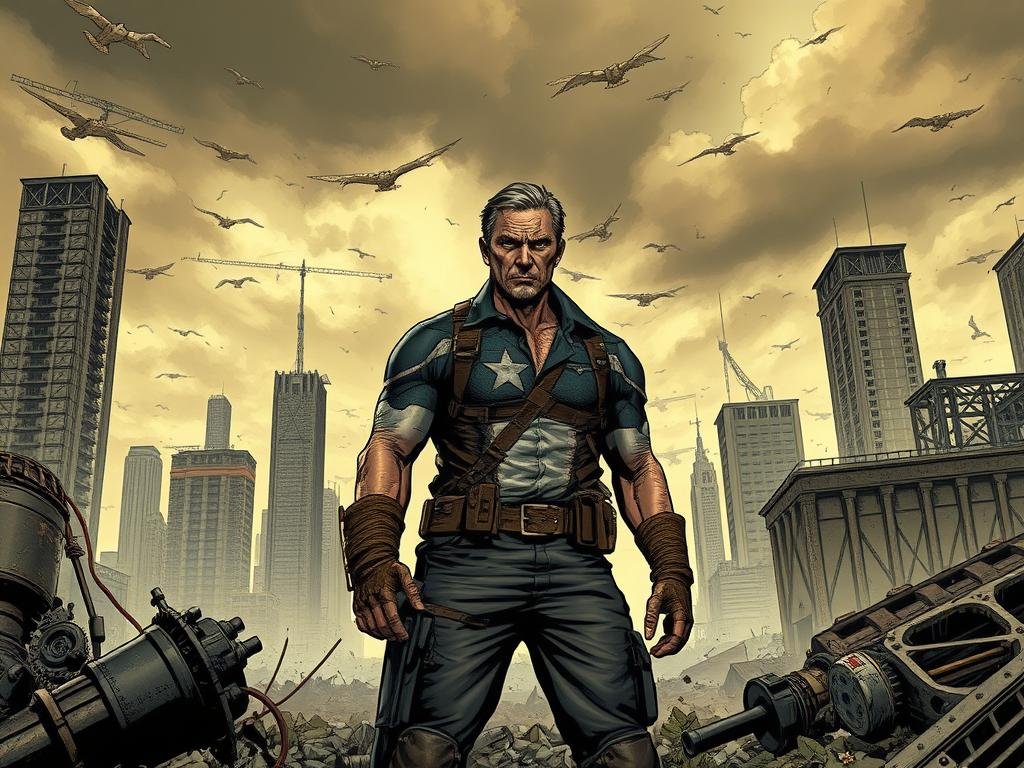
Iron Man’s story cuts deeper. Tony Stark, once the ultimate futurist, now hides in a sterile bunker. He builds robot copies of fallen friends, desperate to recreate a world that no longer wants him. His genius became a cage.
The Evolution of Heroes and Villains
The Fantastic Four’s fate haunts me. Reed Richards wearing Doom’s armor isn’t just ironic – it’s tragic. He literally became the monster he fought, holed up in a dead rival’s castle. Only Sue Storm remains, invisibility reflecting her vanished family.
Then there’s Thor’s transformation. Becoming female through Loki’s trickery isn’t just about gender – it’s about losing control of your story. Her hammer feels heavier now, each swing questioning what makes a god real.
These reinventions show heroes aren’t defined by powers or costumes. They’re defined by how they bend without breaking. Even in this broken world, characters like Steve and Tony remind us that resilience outlives relevance.
The Artistic Brilliance and Visual Legacy
Flipping through those pages felt like uncovering a lost blueprint of heroism. The artwork doesn’t just illustrate the story – it breathes life into every rusted armor plate and cracked concrete slab. This visual language became the trilogy’s beating heart.
Alex Ross’s Vision and Signature Style
Alex Ross’s cover paintings hit like a gut punch. His sketches in the back matter reveal meticulous planning – Captain America’s weathered face mapped with pencil strokes, Thor’s silhouette dissolving into storm clouds.
These weren’t just comic book designs. They were character studies in decay.
John Paul Leon’s interior artwork stunned me differently. His Spider-Man moved like a phantom through ruined alleys, webbing frayed but posture defiant. Those pages balance Ross’s grandeur with raw intimacy. You feel the grit under Iron Man’s rusted fingertips.
Bill Reinhold’s inks deepened the atmosphere. Shadows cling to buildings like ivy. Faces half-hidden in darkness make you lean closer – perfect for a story about buried truths. Together, they resurrected Jack Kirby’s bold shapes through a fractured lens.
What’s brilliant? These visuals feel necessary. Thor’s redesigned hammer isn’t just cool – its jagged edges mirror her fractured identity. Every stroke serves the narrative. That’s why this comic book style still inspires artists today.
Narrative Complexity: Dual Perspectives and Exposition
The story’s framework gripped me like a puzzle box. Through blinded Watcher Uatu and cynical Machine Man, we piece together this shattered world. Their dual narration feels like eavesdropping on detectives solving their own apocalypse.
The Roles of Uatu and X-51 in Storytelling
Uatu’s blindness becomes ours. Forced to rely on Machine Man’s reports, we experience the story through two flawed lenses. Aaron Stack’s dry wit cuts through Uatu’s cosmic despair, creating tension between cold facts and raw emotion.
This approach shines in quieter moments. When Machine Man describes Spider-Man’s frayed costume, Uatu interjects with Peter Parker’s forgotten laugh. These layered perspectives turn every issue into a time capsule – equal parts history lesson and mystery novel.
Mixing Show with Tell: A Personal Take
I’ll admit – some pages read like annotated timelines. The story pauses frequently to explain Celestial biology or recap man’s mutation cycles. While rich in lore, it can stall momentum.
Yet this way of storytelling grew on me. By issue #12, I realized the exposition dumps mirror how survivors process trauma – retelling events to make sense of chaos. It’s not perfect, but it’s daring. And in comics, daring lasts longer than polish.
FAQ
Q: How does the Earth X trilogy reimagine classic Marvel heroes like Captain America?
A: I love how it pushes familiar characters into morally gray roles. Steve Rogers becomes a disillusioned symbol of a broken system, while Tony Stark’s legacy ties into the world’s collapse. Their transformations highlight the cost of survival in a dying universe.
Q: What role do the Celestials play in shaping this dystopian future?
A: The Celestials’ ancient experiments on humanity take center stage, revealing hidden genetic codes that trigger global mutations. Their presence forces heroes like the Fantastic Four to confront humanity’s purpose—and whether we’re just lab rats in a cosmic game.
Q: Why does Alex Ross’s artwork matter so much to the series?
A: His painterly style gives the story a haunting, timeless quality. Every panel feels like a weathered mural of a fallen world, from Iron Man’s rusted armor to the eerie glow of the Terrigen Mists. It’s visual storytelling that sticks with you.
Q: How do Uatu the Watcher and Machine Man (X-51) drive the narrative?
A: Uatu’s omniscient perspective contrasts with X-51’s ground-level struggles, creating a push-pull between cosmic stakes and human emotion. Their dynamic kept me hooked—like seeing the same tragedy through a telescope and a microscope.
Q: Does the trilogy’s focus on exposition weaken its pacing?
A: At times, yes—but I found the lore dumps fascinating. Learning how the Inhumans’ rise or the Avengers’ fall ties into broader themes of power and decay made me appreciate the ambition behind weaving 60+ years of Marvel history into one saga.
Q: What makes this dystopia unique compared to other Marvel alternate realities?
A: It’s not just about heroes losing—it’s about evolution gone wrong. The Terrigen Mists turning everyone into mutants flips the script on the X-Men’s struggles, while societal collapse feels inevitable, not just a temporary crisis. It’s a world where “heroism” has no easy answers.
Q: Are there standout villain reinventions in the trilogy?
A: Absolutely! Red Skull’s twisted rise as a “savior” and Norman Osborn’s manipulative schemes take on new layers. Even lesser-known antagonists like the Skrulls become tragic figures, trapped by the same forces destroying Earth.
Q: How accessible is Earth X for new Marvel readers?
A: While prior knowledge helps, I’d say dive in anyway. The story explains key events through Uatu’s narration, and the emotional beats—like Thor’s guilt or Black Panther’s leadership—stand strong even if you’re learning the lore as you go.
